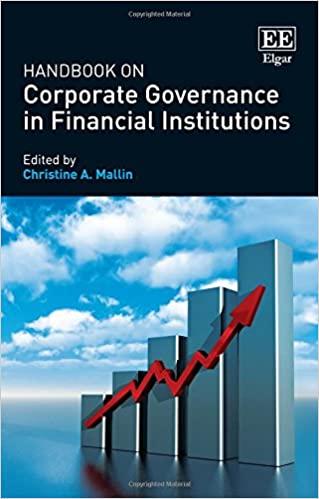Question
$10, 000,000, which is made up of 20 percent debt and 80 percent equity. The firm has 100,000 outstanding ordinary shares and no preference shares.
$10, 000,000, which is made up of 20 percent debt and 80 percent equity. The firm has 100,000 outstanding ordinary shares and no preference shares. Although Theo feels that the firms current policy of paying out 60 percent of each years earnings in dividends is appropriate, he believes that the current capital structure may lack adequate financial leverage. In order to evaluate the firms capital structure, Theo is considering three alternative capital structures A (30 percent debt ratio), B (50 percent debt ratio), and C (60 percent debt ratio). The interest rate on current debt is 10 percent and is believed to remain the same up to a borrowing limit of $1,000,000. Theo expects the firms current earnings before interest and taxes (EBIT) to remain at $1,200,000. The firm expects to have $200,000 of retained earnings available in the coming year. The firm has a tax rate of 40 percent. In assessing the cost of capital, Theo has the following information which has been compiled about the companys current costs of two sources of capital: Exhibit 1 Source of capital Range of new financing Cost Long-term debt $0 to $1,000,000 10% $1,000,001 and above 11% Common stock equity $0 to $2,000,000 13% $2,000,001 and above 14% Retained earnings 12% 2 Exhibit 2 NAMIB MILLS Balance Sheet Assets 2017 2018 2019 Cash $20,000 $30,000 $20,000 Marketable securities 30,000 35,000 50,000 Accounts receivable 150,000 230,000 330,000 Inventory 250,000 285,000 325,000 Total Current Assets 450,000 580,000 725,000 Net Plant and equipment 550,000 720,000 1,169,000 Total Assets.. $1,000,000 $1,300,000 $1,894,000 Liabilities & Equity Accounts payable. $100,000 $225,000 $200,000 Notes payable (bank) 100,000 100,000 300,000 Total Current liabilities 200,000 325,000 500,000 Long-term liabilities 250,000 331,120 550,740 Total liabilities 450,000 656,120 1,050,740 Common stock ($10 par) 400,000 400,000 460,000 Capital paid in excess of par. 50,000 50,000 80,000 Retained earnings 100,000 193,880 303,260 Total stockholders equity.. 550,000 643,880 843,260 Total liabilities and stockholdersequity $1,000,000 $1,300,000 $1,894,000 Required:
Question 1 (30 marks) (a) How much interest will be paid on debt in the proposed capital structures? (3 marks)
(b) What is the current share price? (2 marks)
(c) Assuming that the share price stays the same, calculate the earnings per share for the current and proposed three financing alternatives. (12 marks)
(d) What is the level of EBIT at the point of indifference? (3 marks)
(e) Find the dividend cover for the three financing alternatives (2 marks)
(f) What is Namib Mills Basic earning power? (2 marks)
(g) What are the returns on assets (ROA) for current and proposed capital structures? (6 marks)
Question 2 (10 marks) Exhibit 1 Namib Mills uses the weights based on the desired target capital structure proportions outlined above:
3 (a) Calculate the breakpoints associated with the firms retained earnings for the three proposed capital structures. (3 marks)
(b) Calculate the breakpoints associated with the firms financial situation for the current capital structure? (2 marks)
(c) Calculate the weighted cost of capital associated with the current and below the first breakpoint in
(b). (3 marks) (d) Calculate the breakpoints associated with the firms 50 percent debt capital structure.(2 marks)
Step by Step Solution
There are 3 Steps involved in it
Step: 1

Get Instant Access to Expert-Tailored Solutions
See step-by-step solutions with expert insights and AI powered tools for academic success
Step: 2

Step: 3

Ace Your Homework with AI
Get the answers you need in no time with our AI-driven, step-by-step assistance
Get Started


